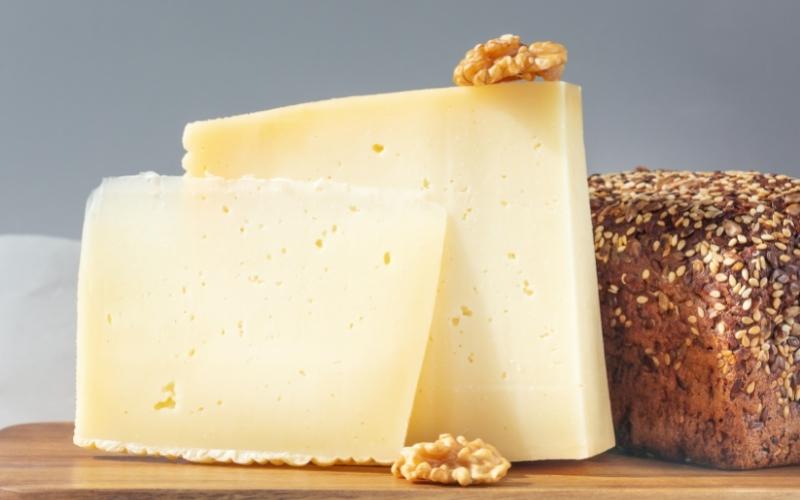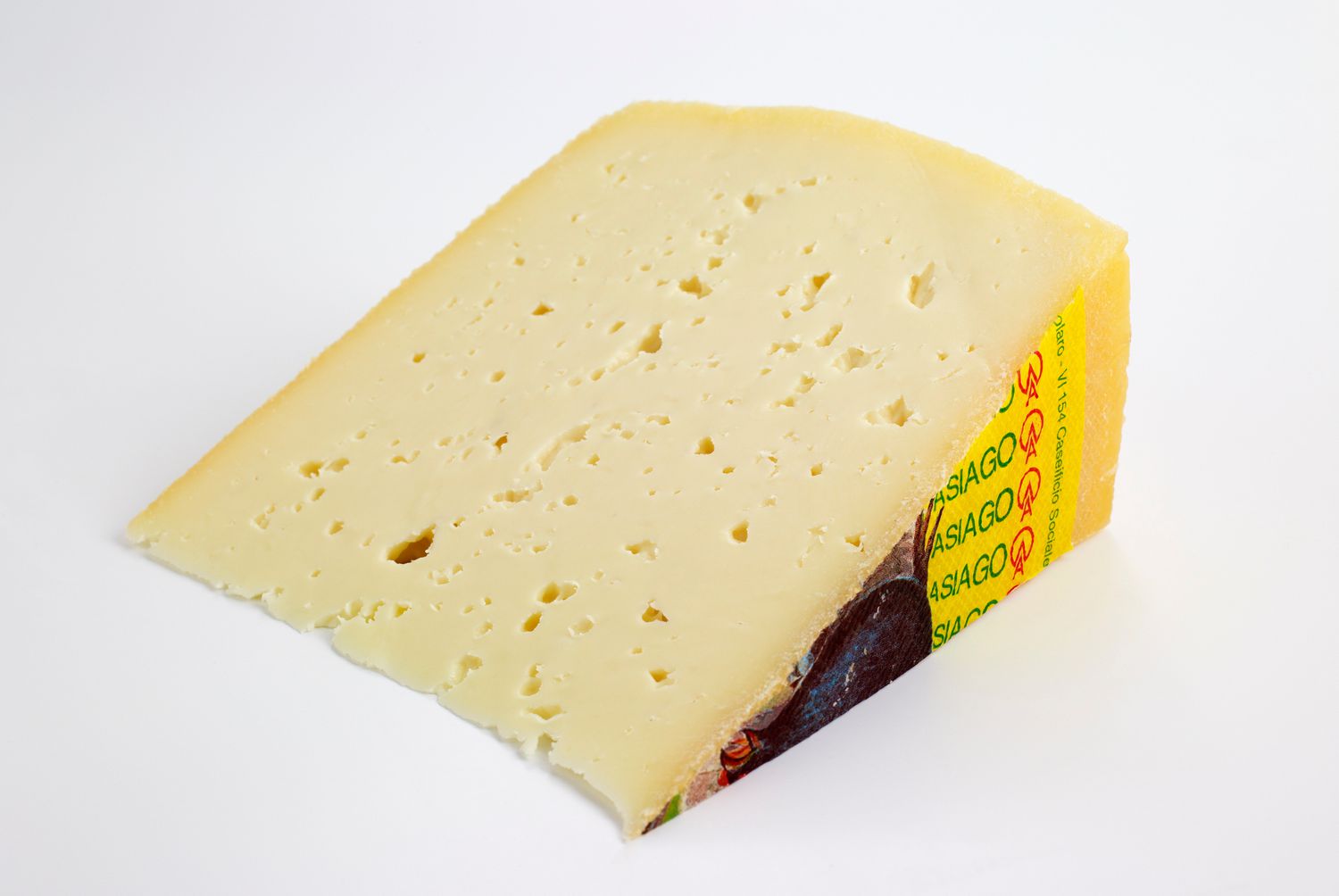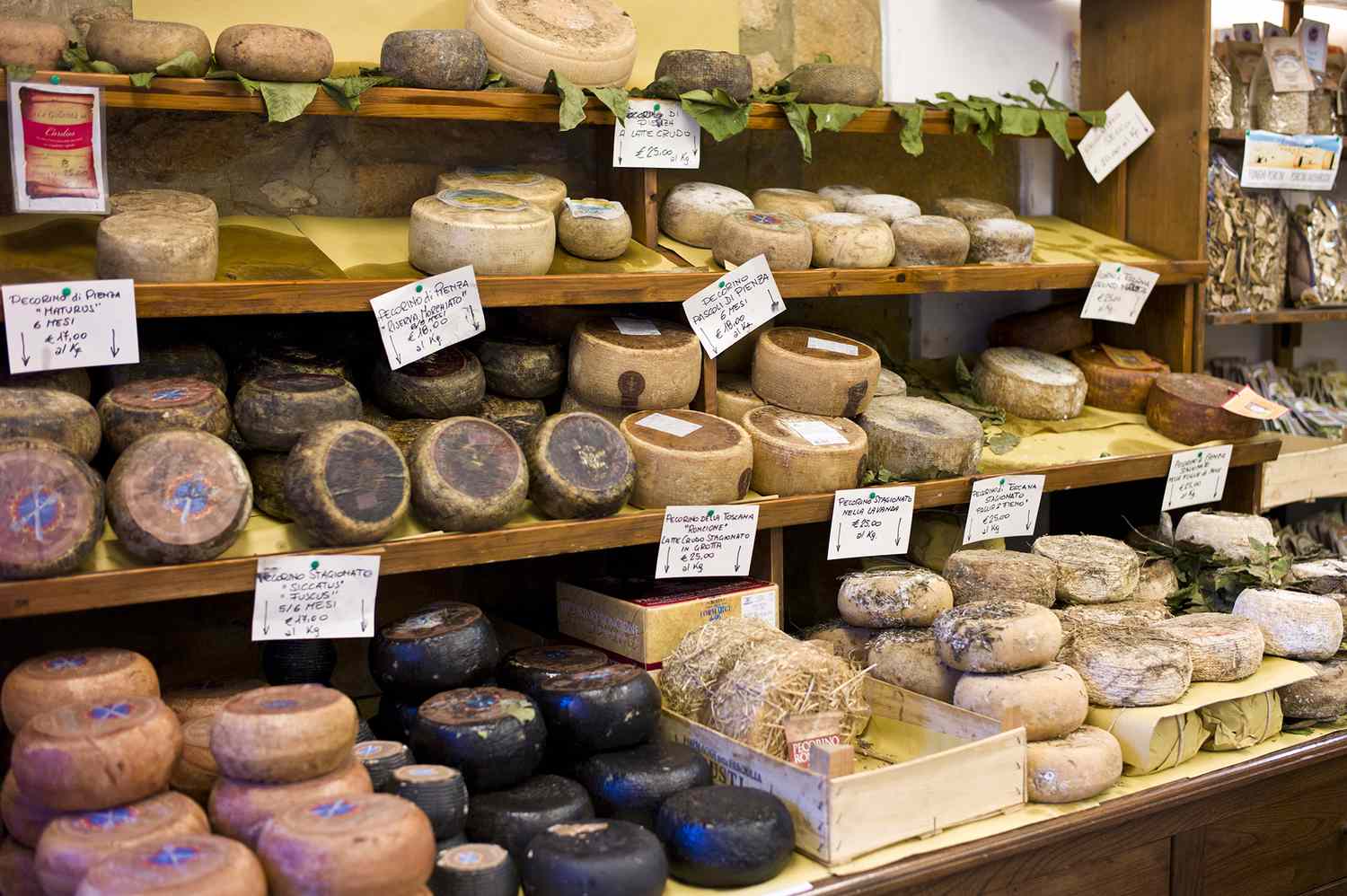Introduction

In the world of Italian cheese, Asiago and Parmesan are two popular choices that often go head-to-head. While they share similarities as hard Italian cheeses, there are distinct differences that set them apart. This article aims to shed light on the origins, production processes, flavors, and uses of Asiago and Parmesan cheese. By exploring their unique characteristics, readers can better understand these cheeses and make informed decisions when incorporating them into their culinary ventures. Whether you are a cheese connoisseur or simply enjoy the flavors of Italy, this showdown between Asiago and Parmesan will surely enlighten your taste buds.
Overview And History Of Asiago And Parmesan Cheese
Asiago and Parmesan cheese are both well-known Italian cheeses that have a rich history and cultural significance.
Asiago cheese originated in the Veneto region of Italy, dating back to the 10th century. It was traditionally made by farmers in the mountainous areas using cow’s milk. Today, Asiago cheese is still produced using the same age-old techniques, resulting in its distinct flavor and texture.
Parmesan cheese, also known as Parmigiano Reggiano, has a history that can be traced back to the Middle Ages in the Emilia-Romagna region of Italy. It is made from cow’s milk and is renowned for its strong, nutty flavor and crumbly texture.
Both cheeses have gained popularity worldwide and are widely used in Italian cuisine. They are protected by the PDO (Protected Designation of Origin) certification, ensuring that only cheese made in specific regions using traditional methods can be labeled as Asiago or Parmesan.
Nutritional Value And Health Benefits Of Both Cheeses
Asiago cheese and Parmesan cheese both offer unique nutritional profiles and potential health benefits. Parmesan cheese is known for its higher protein, calcium, and phosphorus content compared to Asiago cheese. It also has lower sodium and sugar levels per serving. Conversely, Asiago cheese tends to have fewer calories, total fat, and saturated fat compared to Parmesan cheese. Both cheeses provide essential nutrients and can be part of a balanced diet. However, moderation is key due to their higher fat and calorie content. Incorporating these cheeses into recipes can add flavor and a good source of calcium to meals.
Asiago Cheese

Asiago cheese is a popular Italian cheese that originated in the Asiago plateau in the Veneto region of Italy. It is made from cow’s milk and is known for its distinct flavor and texture. Asiago cheese has a buttery, creamy, and slightly nutty taste, with a well-pronounced bitterness in aged versions like Asiago Stravecchio. It is often used in cooking, melting well and adding a rich, savory flavor to dishes. Asiago cheese is also a good source of protein and calcium, making it a nutritious addition to any meal.
Origins And Production Process Of Asiago Cheese
Asiago cheese originated in the Asiago plateau in the Veneto region of Italy. It has a rich history that dates back to the 10th century. The production process of Asiago cheese involves using cow’s milk, which is heated and then coagulated using rennet. The curds are then cut and cooked, and the whey is drained. The curds are then pressed into molds and aged for different periods of time, ranging from a few weeks to over a year. This aging process gives Asiago cheese its distinct flavors and textures, making it a beloved Italian cheese.
Aroma, Taste, And Texture Of Asiago Cheese
Asiago cheese has a distinct aroma that is often described as nutty, buttery, and slightly tangy. Its taste is rich and full-bodied, with a pleasant balance of sweetness and sharpness. The flavor intensifies as the cheese ages, becoming more robust and complex. In terms of texture, Asiago can vary depending on its age. Young Asiago is smooth and creamy, while older varieties become crumbly and granular. Its texture adds a delightful crunch and mouthfeel to dishes, making it a versatile cheese for both snacking and cooking.
Parmesan Cheese

Parmesan cheese, known in Italy as Parmigiano Reggiano, is a famous Italian cheese that has been produced for centuries. Made from cow’s milk, Parmesan cheese is known for its sharp and robust flavor. It has a distinct earthiness and rich savory notes, with a hint of fruitiness. Parmesan cheese has a hard and granular texture, making it ideal for grating over pasta, soups, and salads. Its flavor intensifies with age, and true Parmigiano Reggiano can only be produced in specific regions of Italy, following strict production guidelines. It is a staple in Italian cuisine and adds a delicious depth of flavor to a variety of dishes.
Origins And Production Process Of Parmesan Cheese
Parmesan cheese, also known as Parmigiano Reggiano, originated in the regions of Emilia-Romagna and Lombardy in Italy. It has a long history that dates back to the Middle Ages. The production process of Parmesan cheese is highly regulated and follows strict guidelines. It begins with fresh cow’s milk, which is carefully selected and heated. Then, natural whey starter and rennet are added to curdle the milk. The curds are cut into small pieces and cooked, allowing the whey to separate. The curds are then molded and pressed into wheel-shaped forms. After this, the cheese is left to mature for a minimum of 12 months, but some varieties can be aged for up to 36 months. The aging process contributes to the cheese’s distinctive flavor and texture.
Aroma, Taste, And Texture Of Parmesan Cheese
Parmesan cheese is known for its distinct aroma, taste, and texture. It has a rich and nutty aroma that is often described as caramel-like. When it comes to taste, Parmesan is sharp and robust, with a combination of fruity and savory notes. Its flavor profile is complex and enhances the taste of various dishes. In terms of texture, Parmesan is hard and granular, with a slightly grainy mouthfeel. It can be easily grated or shaved, adding a delightful crunch to salads, pastas, and many other dishes.
Differences Between Asiago And Parmesan Cheese

Asiago and Parmesan cheese may look similar, but they have distinct differences that set them apart. Here are the key differences between the two:
- Varieties and aging process: Asiago cheese comes in two varieties – fresh (Asiago Pressato) and aged (Asiago d’Allevo or Asiago Stravecchio). Parmesan cheese is typically aged for longer periods, ranging from 12 to 36 months.
- Flavor profiles: Asiago cheese is slightly more buttery, creamy, and nutty, with a noticeable bitterness in the aged variety. Parmesan cheese is sharper and more robust, with fruity, savory notes, and a distinct earthiness.
- Culinary uses: Asiago cheese is often used in melting dishes like pasta, risotto, and soups, while Parmesan is commonly grated over pasta, salads, and pizza for added flavor.
- Origin: Asiago cheese is produced primarily in the Asiago plateau in Italy, while Parmesan cheese is made in the regions of Emilia-Romagna and Lombardy.
Knowing these differences can help you choose the right cheese for your specific culinary needs.
Varieties And Aging Process
Asiago cheese comes in two varieties – fresh (Asiago Pressato) and aged (Asiago d’Allevo or Asiago Stravecchio). Fresh Asiago cheese is soft and creamy, perfect for melting in dishes like pasta and risotto. Aged Asiago cheese has a firmer texture and develops a more complex flavor with age. It is aged for a minimum of 9 months to achieve a sharp and nutty taste. Parmesan cheese, on the other hand, is typically aged for longer periods, ranging from 12 to 36 months, resulting in a crumbly texture and intense flavor. The aging process gives Parmesan its rich and robust taste.
Flavor Profiles And Culinary Uses
Asiago cheese offers a buttery, creamy, and nutty flavor, with a pronounced bitterness in aged varieties. It pairs well with both sweet and savory flavors, making it a versatile cheese for cooking. Fresh Asiago is perfect for melting in pasta dishes and risotto, while aged Asiago adds depth to salads, soups, and sauces.
Parmesan cheese has a sharper and more robust flavor, with hints of fruitiness and earthiness. This cheese shines when grated over pasta, salads, and soups, enhancing their taste profiles. It also adds a delightful crunch when sprinkled on top of dishes like roasted vegetables or gratins.
Both Asiago and Parmesan cheeses can be enjoyed on their own, as a snack or on a cheeseboard, or added to various recipes to elevate the flavors.
Similarities Between Asiago And Parmesan Cheese

Both Asiago and Parmesan cheeses share a rich Italian heritage and have received Protected Designation of Origin (PDO) certification, which ensures their authenticity and quality. They are both made from cow’s milk and undergo a similar aging process, resulting in hard and flavorful cheeses. In Italian cuisine, both cheeses are commonly used to add depth and richness to dishes such as pasta, risotto, and salads. While they have distinct flavors, the versatility and culinary uses of both Asiago and Parmesan cheese make them essential ingredients in Italian cooking.
Shared Italian Heritage And PDO Certification
Asiago and Parmesan cheeses share a deep Italian heritage and are recognized as iconic products of the country’s culinary tradition. Both cheeses have been awarded the Protected Designation of Origin (PDO) certification, a mark of their authenticity and quality. This certification ensures that the cheeses are made using traditional methods and ingredients specific to their respective regions of origin. It also guarantees that the cheeses are produced within a designated geographic area, which further contributes to their unique flavors and characteristics. This shared heritage and certification make Asiago and Parmesan cheeses authentic symbols of Italian gastronomy.
Common Uses In Italian Cuisine
Asiago and Parmesan cheese both hold a significant role in Italian cuisine, adding depth and flavor to various dishes. They are commonly used in classic Italian recipes such as pasta dishes, risottos, and sauces. Grated or shaved Parmesan cheese is often sprinkled over pasta or used to top pizzas, while Asiago can be melted onto bread, added to soups, or incorporated into fillings for stuffed pastas. Both cheeses also pair well with cured meats, fresh fruits, and nuts, making them versatile ingredients in salads and antipasti platters.
Conclusion

In conclusion, Asiago and Parmesan cheese are both delicious Italian cheeses that bring unique flavors to the table. While Asiago is buttery and nutty with a noticeable bitterness, Parmesan offers a sharper and more robust taste with fruity and savory notes. Both cheeses have a rich culinary history and are widely used in Italian cuisine, adding depth and flavor to pasta dishes, risottos, and sauces. Whether you prefer the creamy elegance of Asiago or the boldness of Parmesan, these cheeses are essential ingredients for any Italian-inspired meal. So, next time you’re in the mood for some cheesy goodness, don’t forget to grab a wedge of Asiago or Parmesan. Buon appetito!
Personal Preferences And Recommendations
When it comes to personal preferences, choosing between Asiago and Parmesan cheese ultimately depends on individual taste preferences and the desired flavor profile for a particular dish. Some may enjoy the buttery creaminess and noticeable bitterness of Asiago, while others may prefer the sharper and more robust flavor of Parmesan. It is recommended to experiment with both cheeses in different recipes to discover which one complements the flavors of a dish best. Whether it’s sprinkling grated Parmesan on top of pasta or using melted Asiago in a creamy pasta sauce, incorporating these cheeses into your culinary creations is sure to elevate your dishes to new levels of deliciousness.
Tips For Incorporating Asiago And Parmesan Cheese In Recipes
When using Asiago and Parmesan cheese in recipes, here are some tips to enhance the flavors:
- Grated or shaved: Both Asiago and Parmesan can be grated or shaved and used as a finishing touch on pasta, soups, salads, and risottos.
- Melted or grated: Try melting Asiago or Parmesan into sauces or gratins for a rich and creamy texture.
- Pairings: Asiago pairs well with fruits, such as pears and apples, while Parmesan complements flavors like tomatoes and balsamic vinegar.
- Grilled dishes: Sprinkle grated Asiago or Parmesan on top of grilled vegetables or meats for a delicious flavor boost.
- Baking: Use grated Parmesan or Asiago in breads, pizza crusts, or savory pastries to add a cheesy twist.
Whether you’re using Asiago or Parmesan, these tips will help you incorporate these flavorful cheeses into a variety of dishes for a delightful culinary experience.
FAQ: Asiago Cheese vs Parmesan
Q: What is the difference between Asiago cheese and Parmesan?
A: Asiago cheese and Parmesan are both Italian cheeses with distinct flavors, textures, and culinary uses.
Q: What type of milk is used to make Asiago cheese and Parmesan?
A: Both cheeses are traditionally made from cow’s milk. However, specific variations of Asiago cheese may also use sheep’s milk.
Q: Are Asiago cheese and Parmesan made using the same production process?
A: No, the production process for Asiago cheese and Parmesan differs. Asiago cheese is often made using a combination of traditional and modern techniques, while Parmesan is crafted through a lengthy aging process.
Q: How would you describe the flavor of Asiago cheese?
A: Asiago cheese has a mildly nutty and slightly sharp flavor that intensifies as it ages.
Q: What about the taste profile of Parmesan cheese?
A: Parmesan is known for its rich, sweet, and savory flavor, which becomes more pronounced with age.
Q: Can both cheeses be used interchangeably in recipes?
A: Yes, both Asiago cheese and Parmesan can be used in a variety of dishes. However, the choice often depends on personal preference and the desired flavor outcome.
Q: What are some common uses for Asiago cheese?
A: Asiago cheese is often grated or shredded over pasta, salads, or soups. It can also be enjoyed on its own or as part of a cheese platter.
Q: How is Parmesan typically used in cooking?
A: Parmesan is popularly used in Italian cuisine, including grated or shaved over pasta dishes, risottos, and vegetable-based recipes. It is also commonly sprinkled on top of soups.
Q: Does the texture of Asiago cheese differ from Parmesan?
A: Yes, the texture of Asiago cheese is semi-soft when young, becoming firmer and crumbly as it ages. Parmesan, on the other hand, has a hard and granular texture due to its long aging process.
Q: How do the aging processes of Asiago and Parmesan differ?
A: Asiago cheese is typically aged for a shorter period compared to Parmesan. While Parmesan is aged for at least 12 months (some up to 36 months), Asiago cheese can be consumed at various stages of aging, ranging from fresh to over a year.
Q: Can I store Asiago cheese and Parmesan in the same way?
A: It is best to store both Asiago cheese and Parmesan in airtight containers in the refrigerator. However, it’s recommended to keep them separate to avoid cross-contamination of flavors.
Q: Are both cheeses suitable for individuals with lactose intolerance?
A: While aged Parmesan is often considered to be relatively low in lactose and may be better tolerated by individuals with lactose intolerance, it is best to consult with a healthcare professional if you have specific dietary concerns.
In conclusion, while Asiago cheese and Parmesan both originate from Italy, they have distinct flavors, textures, and aging processes. Each cheese brings its own unique qualities to various culinary creations, ensuring a wide range of delicious options for cheese lovers.

Everyone has had a recipe that looked great on paper but ended up burning once you got into the kitchen. Obviously, a recipe isn’t just about what ingredients go into it. Knowing how you prepare a dish has a strong impact on how it finally tastes.